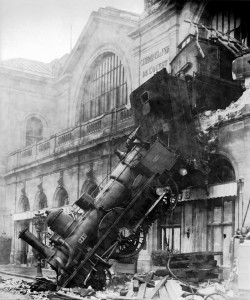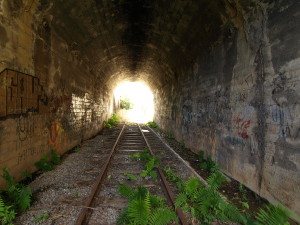Back in September, we voiced curious skepticism about breathless reports of a buried train near Wrocław, formerly Breslau, in Poland. Rumors of this “Nazi gold train” supposedly concealed at the end of World War II and filled with either gold, art, or both, had an odd mixture of plausibility and absurdity. Yet Polish officials went on record confirming…something. On August 28, 2015, Deputy Culture Minister Piotr Zuchowski stated at a press conference that he is “99 percent sure” that the government had located the train allegedly loaded with gold, gems, and perhaps artwork that was buried as the Soviet Red Army encircled Breslau in the last months of World War II. “The train is 100 meters long and is protected,” Zuchowski said.
Topics: Soviet, Breslau, Wrocław, Piotr Koper, Red Army, Nazi Gold Train, Walbrzych, Deputy Culture Minister Piotr Zuchowski, World War II, Poland, Washington Post, Janusz Madej, Andreas Richter, New York Times
What to Make of Nazi “Gold Train” Supposedly Buried in Poland
I mostly ignored the initial twitterings about a supposedly secret train laden with gold and other Nazi-looted treasures that was buried somewhere near Wrocław, formerly Breslau, in Poland. My reasons were straightforward: just like supposed sightings of the Gardner Museum heist art, or the Amber Room, the story had all the hallmarks of a fable being peddled by someone who, perhaps not coincidentally, was suggesting that they be paid something for their trouble. Whether this is the next Gurlitt saga or just Al Capone’s vault, it’s too early to tell.
Topics: the Holy Roman Empire, Al Capone’s vault, Soviet, Gauleiter Karl Hanke, Königsberg, Cornelius Gurlitt, Breslau, Wrocław, Prussia, Max Liebermann, East Prussia, Red Army, Nazi Gold Train, Amber Room, Bernsteinzimmer, the Hanseatic League, Walbrzych, Restitution, Deputy Culture Minister Piotr Zuchowski, World War II, Markus Stötzel, Poland, the Duchy of Silesia, Bohemia, Riders on the Beach, David Friedmann, the Kingdom of Poland, Gardner Museum heist, the German Empire




